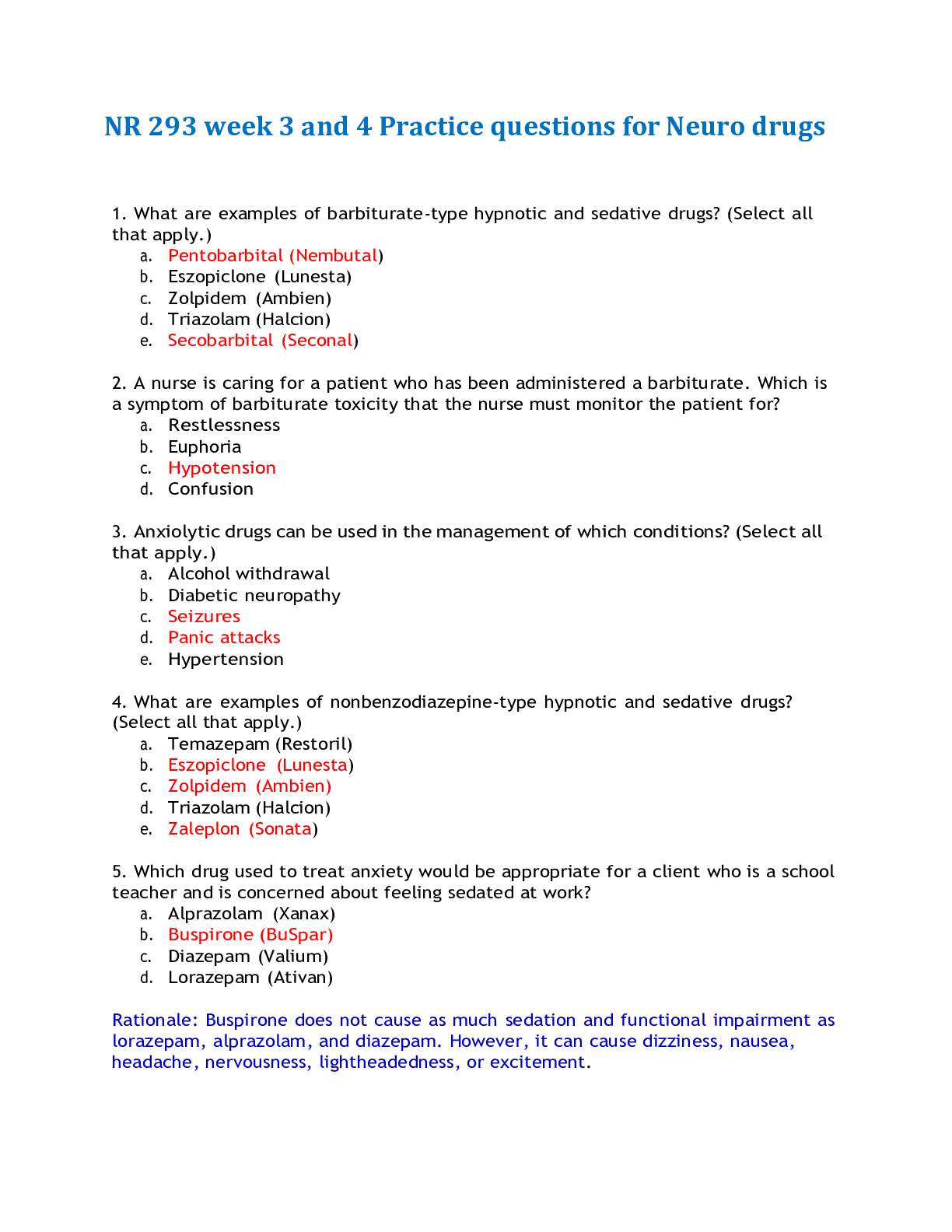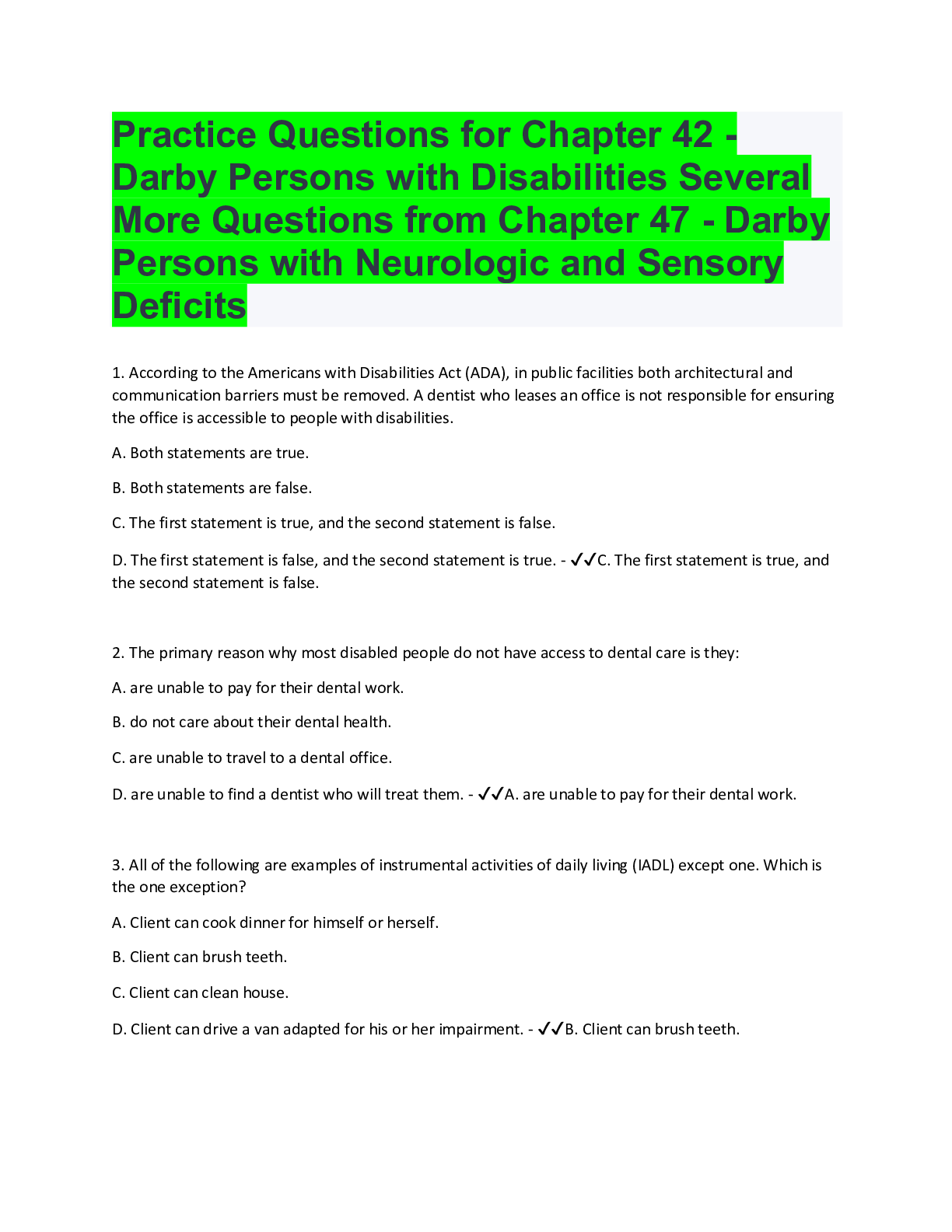*NURSING > EXAM > BIO120:201 Foundations of Biology: Cell and Molecular Biology PRACTICE QUESTIONS FOR EXAM N° 3 FALL (All)
BIO120:201 Foundations of Biology: Cell and Molecular Biology PRACTICE QUESTIONS FOR EXAM N° 3 FALL 2022
Document Content and Description Below
BIO120:201 FOUNDATIONS OF BIOLOGY: CELL AND MOLECULAR BIOLOGY PRACTICE QUESTIONS FOR EXAM N° 3 FALL 2022 DNA Replication, Repair and Recombination 1. If the genome of the bacterium Escherichia ... coli requires about 20 minutes to replicate itself, how can the genome of the fruit fly Drosophila be replicated in only 3 minutes? a) The Drosophila genome is smaller than the E. coli genome. b) Eukaryotic DNA polymerase synthesizes DNA at a much faster rate than prokaryotic DNA polymerase. c) The nuclear membrane keeps the Drosophila DNA concentrated in one place in the cell, which increases the rate of polymerization. d) Drosophila DNA contains more origins of replication than E. coli DNA. 2. DNA replication is considered semiconservative because . a) after many rounds of DNA replication, the original DNA double helix is still intact b) each daughter DNA molecule consists of two new strands copied from the parent DNA molecule c) each daughter DNA molecule consists of one strand from the parent DNA molecule and one new strand d) new DNA strands must be copied from a DNA template 3. The classic experiments conducted by Meselson and Stahl demonstrated that DNA replication is accomplished by a mechanism. a) continuous b) semiconservative c) dispersive d) conservative 4. Meselson and Stahl grew cells in media that contained different isotopes of nitrogen (15N or 14N) so that the DNA molecules produced from these different isotopes could be distinguished by mass. a) Explain what type of equipment was used to separate “light” DNA from “heavy” DNA in the Meselson and Stahl experiments. b) Briefly describe the three existing models for DNA replication when these studies were begun. c) Explain how one of the three then existing models for DNA replication was ruled out definitively by the experiment you described for part a). d) What experimental result eliminated the dispersive model of DNA replication? 5. Which statement is false? [Show More]
Last updated: 2 years ago
Preview 1 out of 13 pages
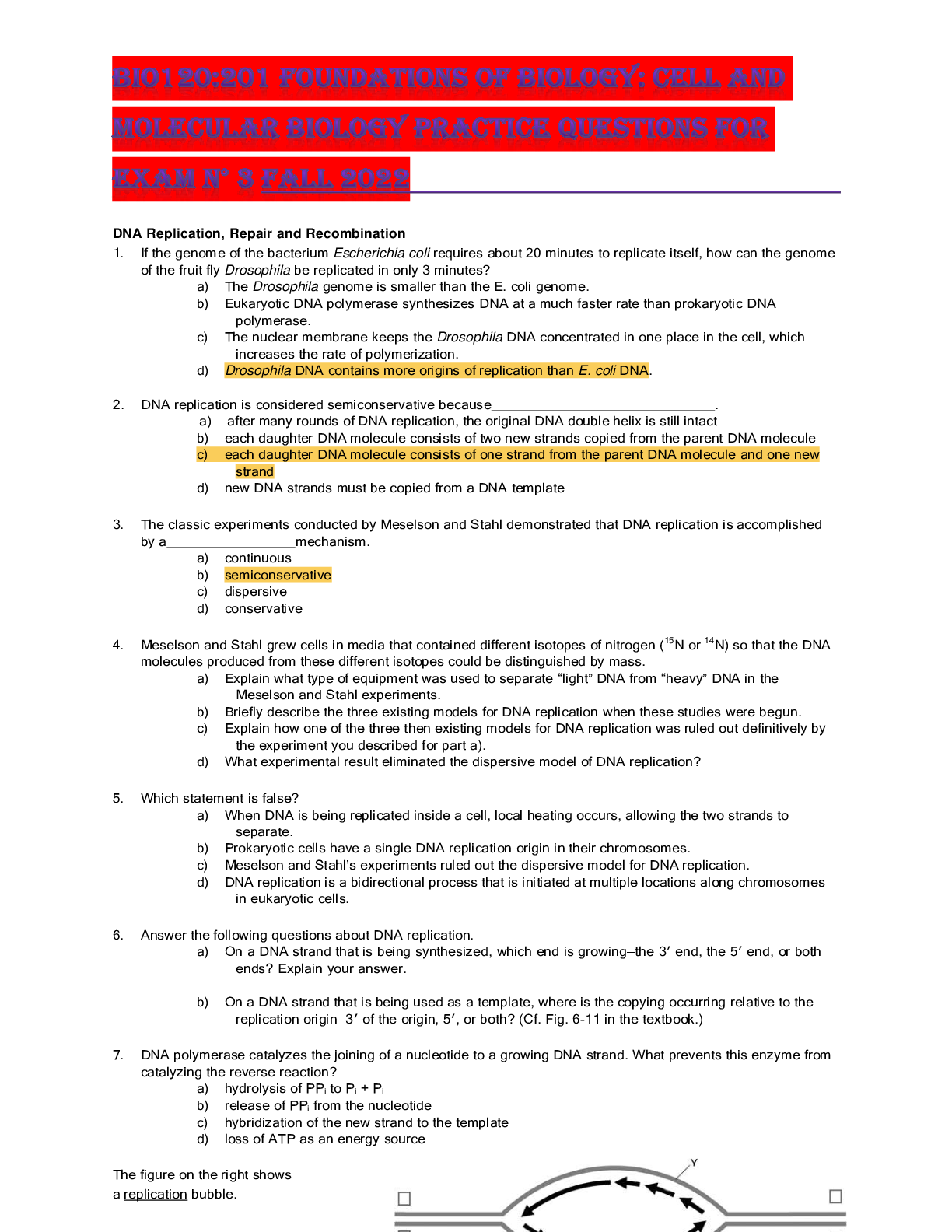
Buy this document to get the full access instantly
Instant Download Access after purchase
Buy NowInstant download
We Accept:

Reviews( 0 )
$10.00
Can't find what you want? Try our AI powered Search
Document information
Connected school, study & course
About the document
Uploaded On
Mar 22, 2023
Number of pages
13
Written in
Additional information
This document has been written for:
Uploaded
Mar 22, 2023
Downloads
0
Views
69

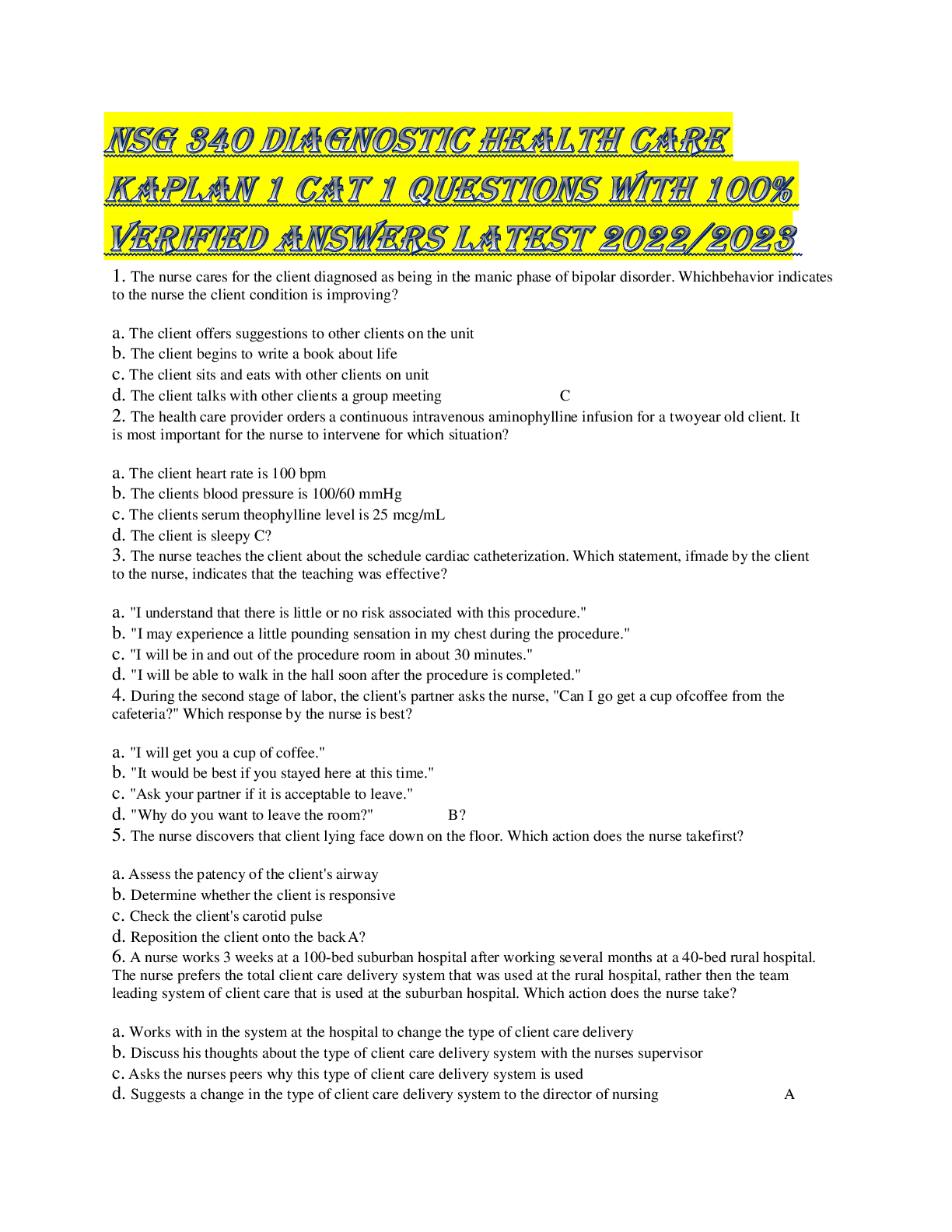

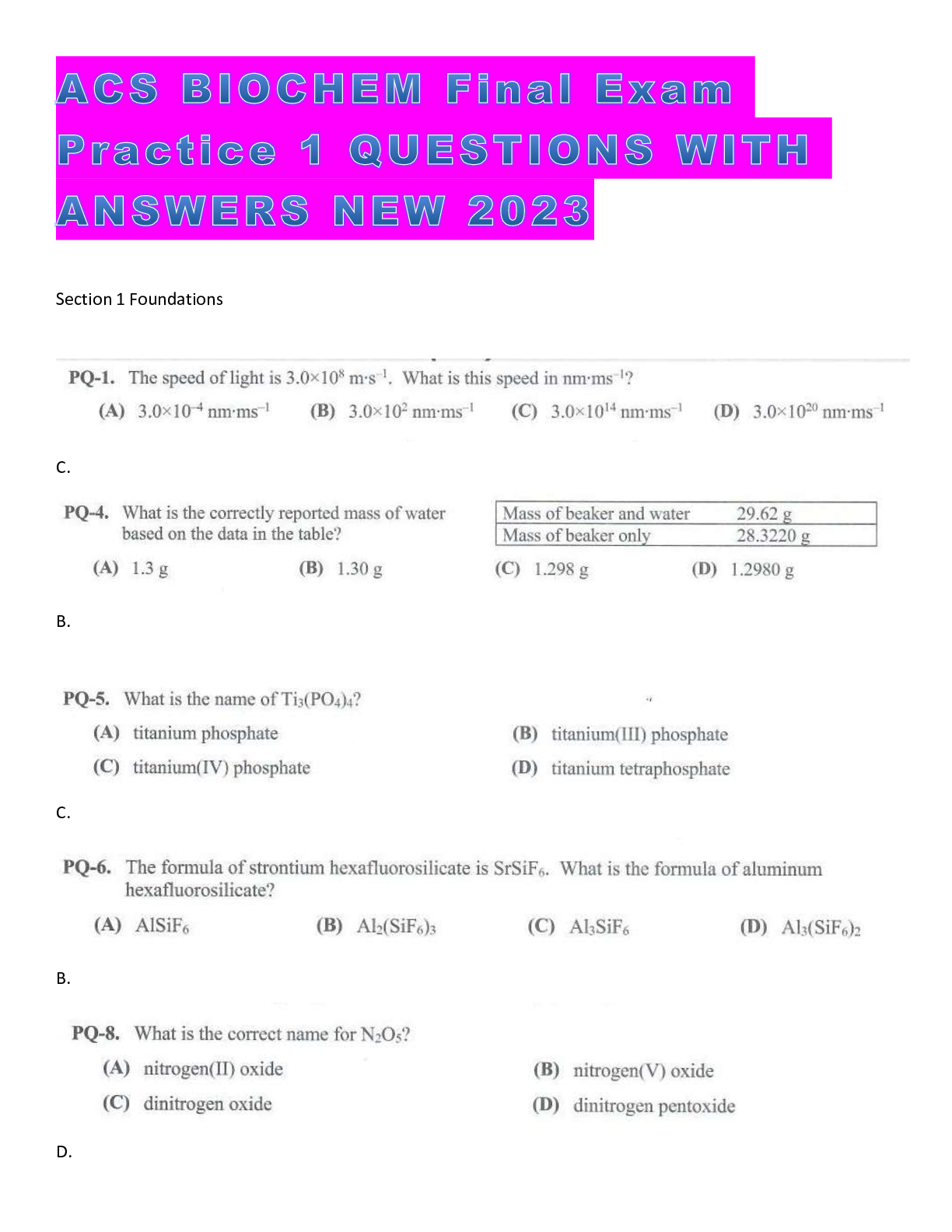

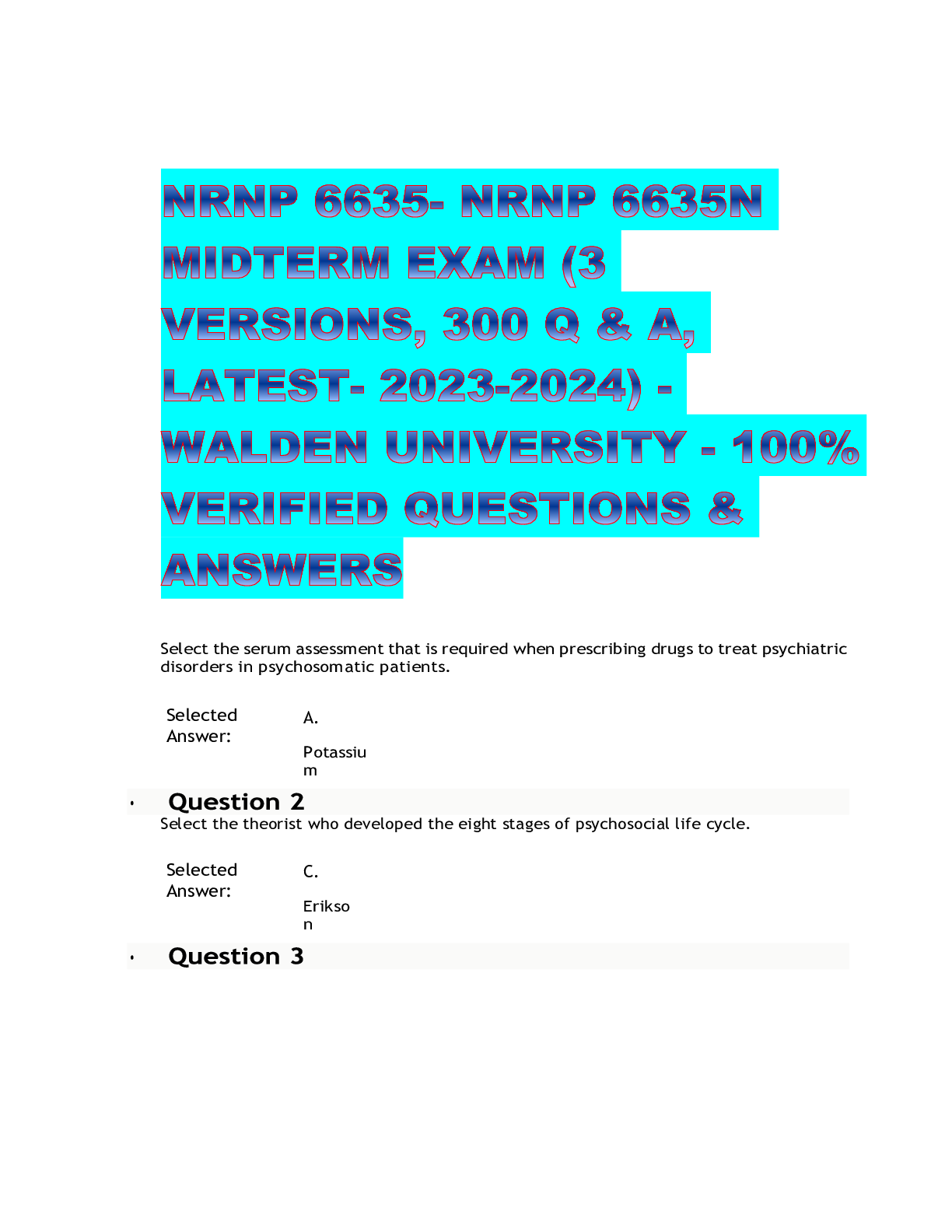
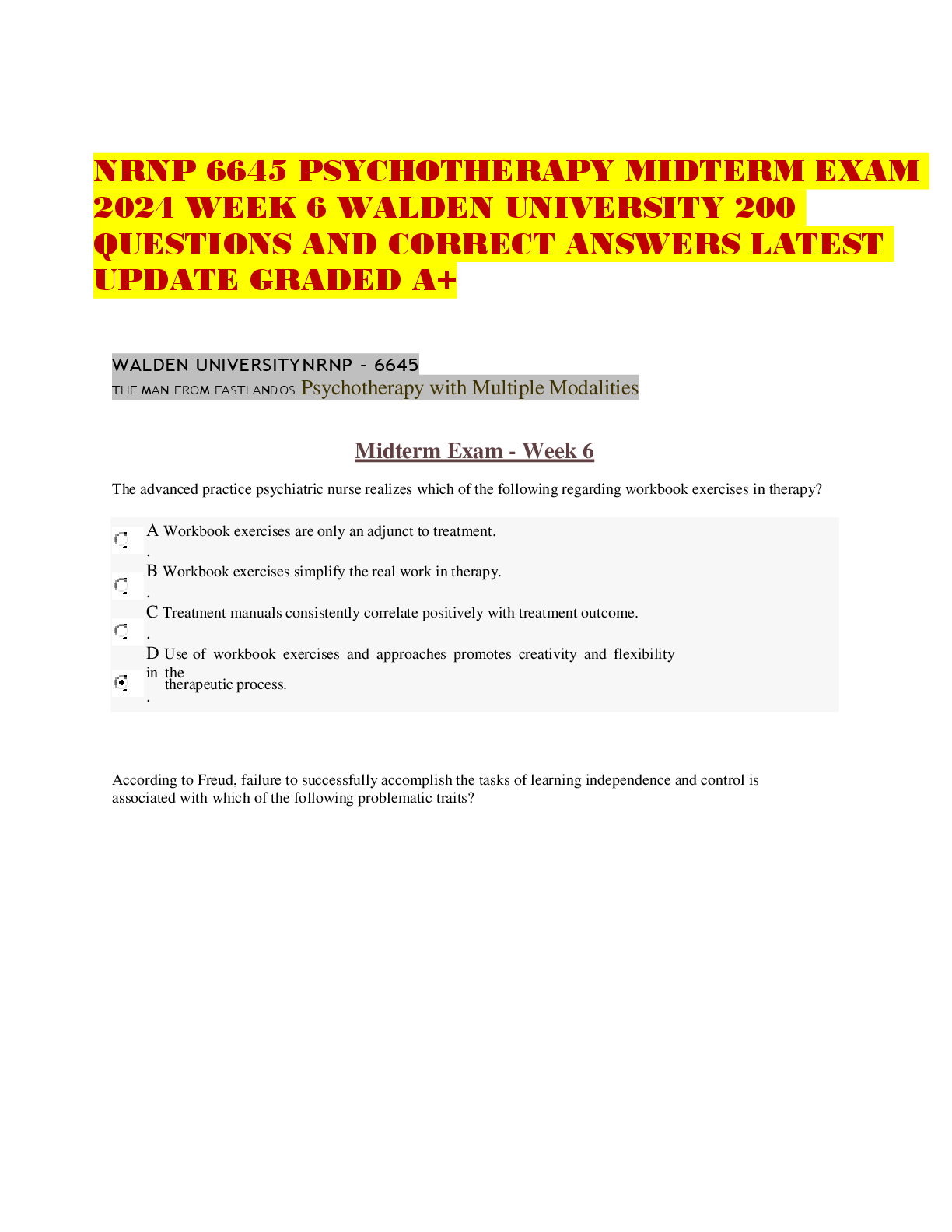


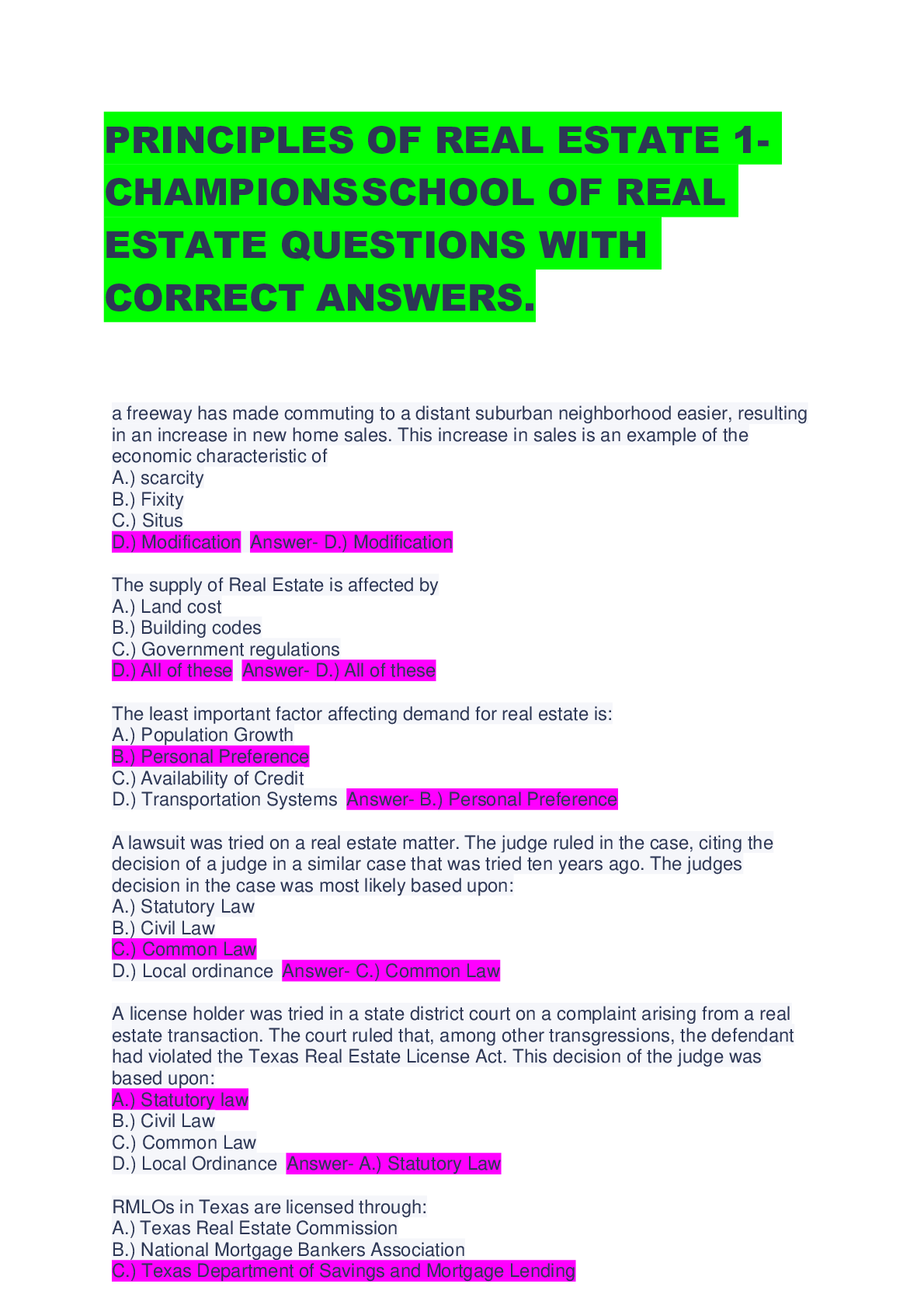
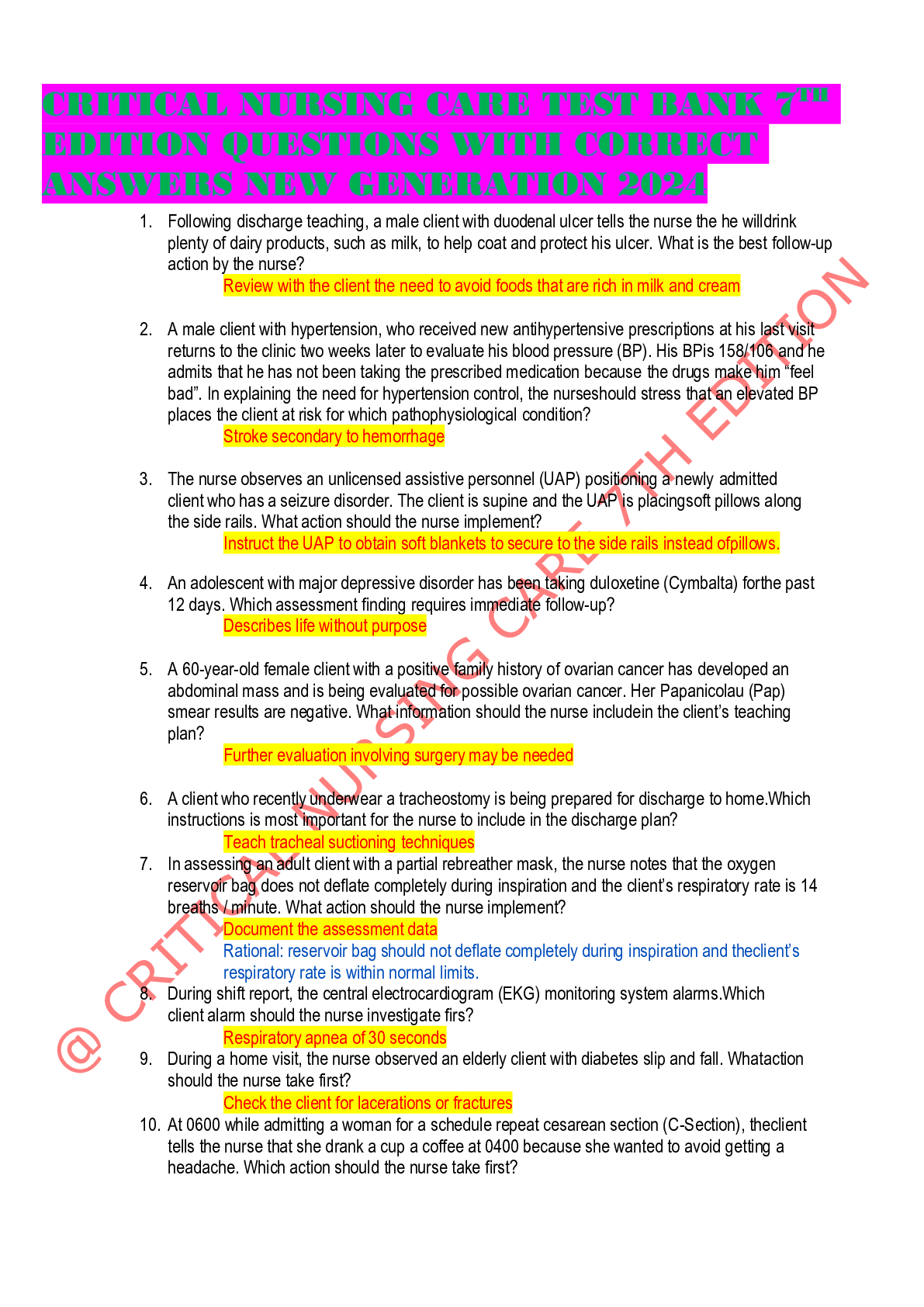
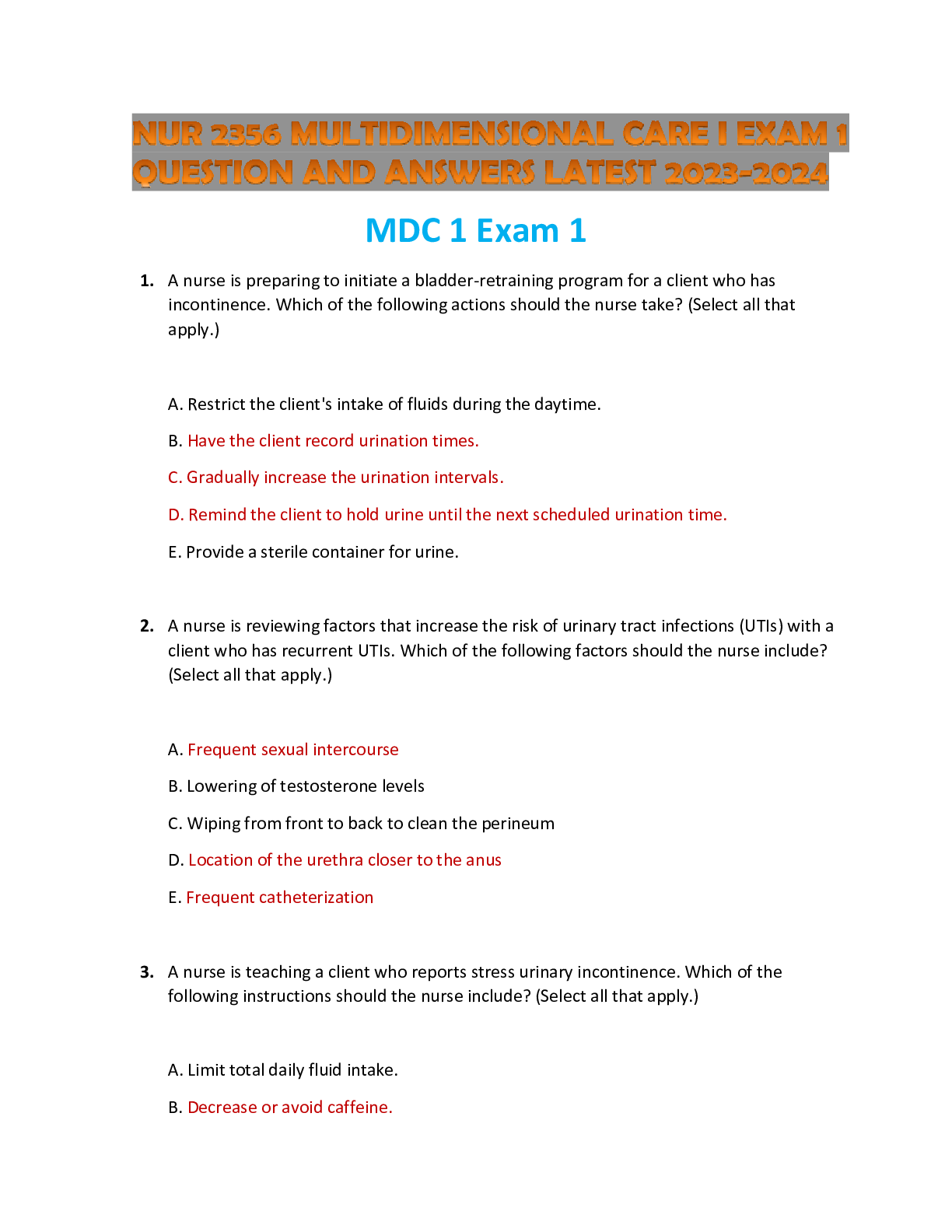


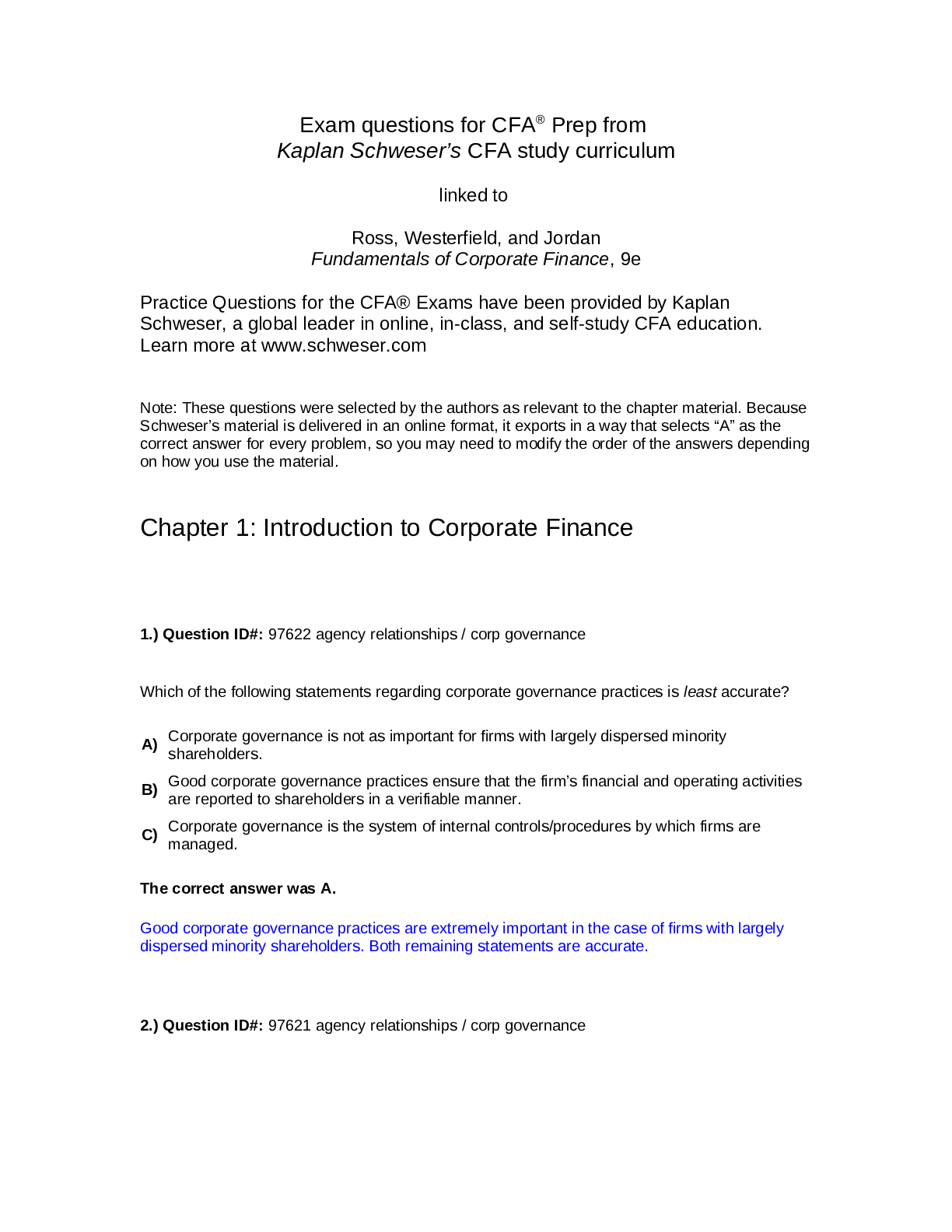
.png)
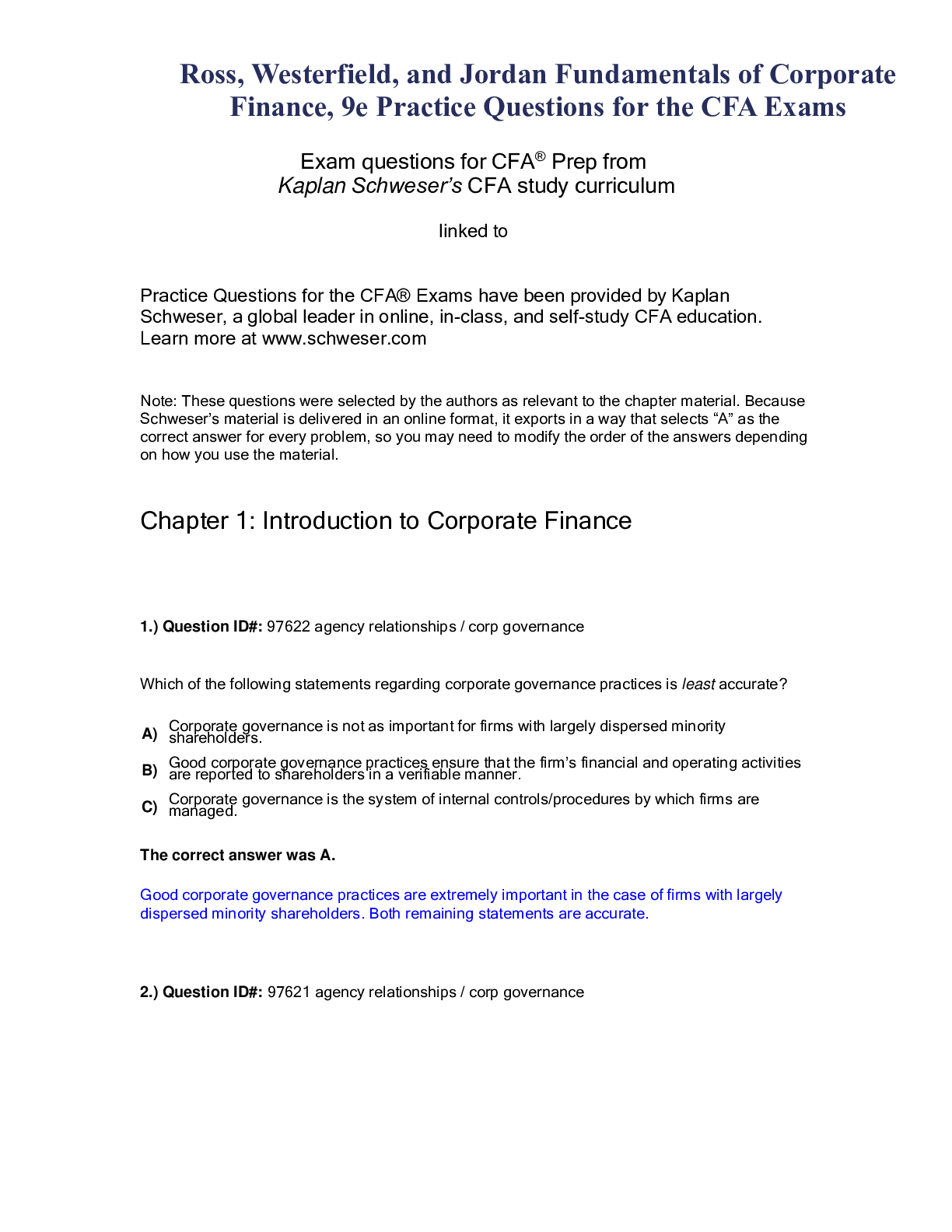

.png)
